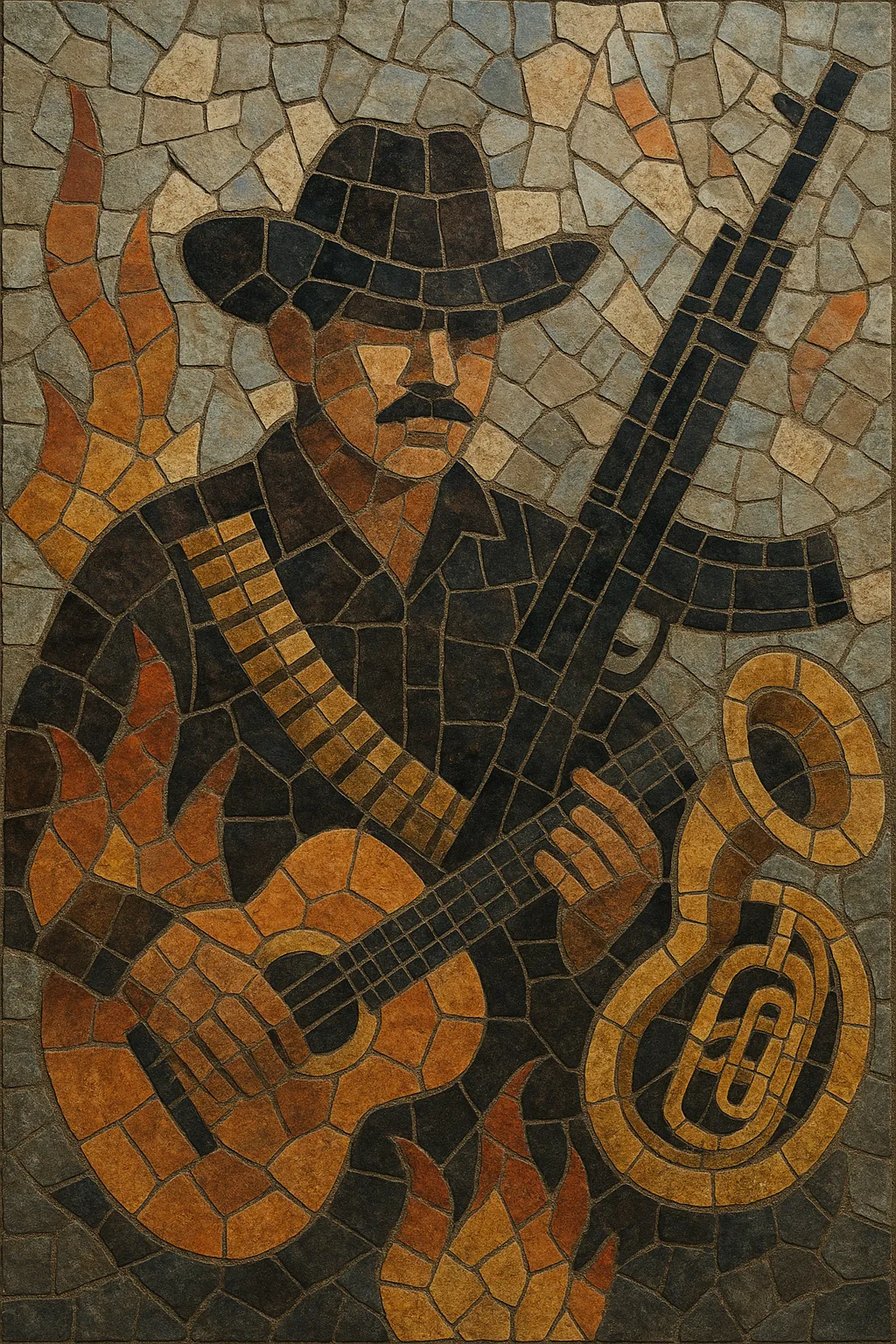Corridos bélicos are a contemporary, hard-edged branch of Mexican corridos characterized by aggressive, militaristic narratives, street slang, and a driving, tuba-led acoustic sound. The term “bélico” (warlike) reflects lyrics that often depict firepower, hierarchies, bravado, and the high-risk lifestyle associated with organized street and cartel culture.
Musically, the style typically uses sierreño instrumentation—lead requinto guitar, rhythm guitar, and prominent tuba—sometimes augmented by tarola (snare), tololoche (acoustic bass), or banda-style brass. While rooted in traditional corrido meters and polka/waltz feels, modern bélicos favor tight 2/4 or 4/4 grooves at mid-tempos, percussive guitar strums, hooky tuba riffs, and occasional urban ad‑libs.
The style surged in visibility in the early 2020s, blending traditional storytelling with contemporary swagger and aesthetics, and crossing over into global pop spaces through collaborations and viral hits.
Corridos bélicos draw lineage from the long-standing corrido tradition (story songs documenting notable people and events), and its late‑20th‑century evolution into narcocorridos, which centered more explicitly on criminal networks and outlaw mythology. The instrumental backbone comes from sierreño formats (requinto‑led trios with tuba) and norteño/banda rhythmic sensibilities (oom‑pah polka, waltz, and ranchera cadences).
By the late 2010s, corridos tumbados modernized corrido aesthetics with youthful slang, relaxed vocal delivery, and urban attitude. This set the stage for a sharper, more hard‑charging variant emphasizing conflict, discipline, and power—the bélico profile—while keeping acoustic instrumentation front and center.
From 2020 onward, artists and labels focused on fast, tuba‑hooked arrangements, concise narratives, and identifiable “bélico” branding. Viral singles and high‑profile collaborations helped push the sound into mainstream charts and streaming playlists, while live shows highlighted tight ensembles and a street‑tested image.
Like narcocorridos, bélicos have faced scrutiny for glamorizing violence and criminality. This has led to concert restrictions or local bans in certain jurisdictions. Supporters argue the songs reflect social realities and oral storytelling traditions; critics cite public safety and ethical concerns.
By the mid‑2020s, corridos bélicos had become a flagship sound within regional mexicano, influencing production aesthetics across neighboring styles and catalyzing crossovers with urbano artists. The genre’s identity remains anchored in acoustic power, tuba‑driven hooks, and uncompromising narratives.


